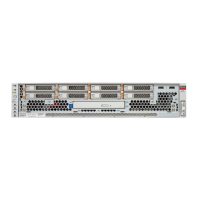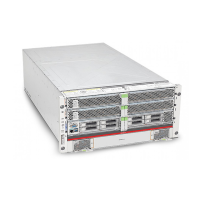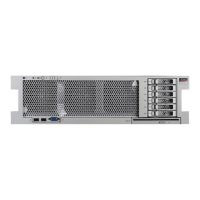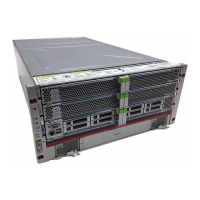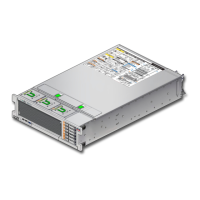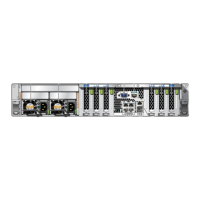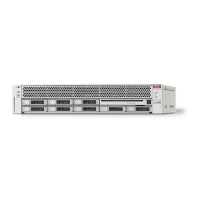Remove a Drive
■ For a standard drive:
a.
At the Oracle Solaris prompt, list all drives in the device tree, including
drives that are not configured.
# cfgadm -al
This command lists dynamically reconfigurable hardware resources and shows their
operational status. In this case, look for the status of the drive you plan to remove.
This information is listed in the Occupant column.
Ap_idTypeReceptacleOccupantCondition
c0scsi-busconnectedconfiguredunknown
c0::dsk/c1t0d0diskconnectedconfiguredunknown
c0::dsk/c1t0d0diskconnectedconfiguredunknown
usb0/1unknownemptyunconfiguredok
usb0/2unknownemptyunconfiguredok
...
You must unconfigure any drive you plan to remove.
b.
Unconfigure the drive using the cfgadm -c unconfigure command.
For example, type:
# cfgadm -c unconfigure c0::dsk/c1t1d0
Replace c0:dsk/c1t1d0 with the drive name that applies to your situation.
c.
Verify that the drive's blue Ready to Remove LED is lit.
■ For an NVMe Drive:
a.
Determine the name of the NVMe drive to be removed.
# hotplug list -lc
Locate the name of the drive, such as /SYS/DBP/NVME0 in this example.
You can use this same command to check the state of the drive at other stages of the
removal procedure.
Servicing Drives 53
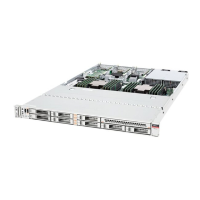
